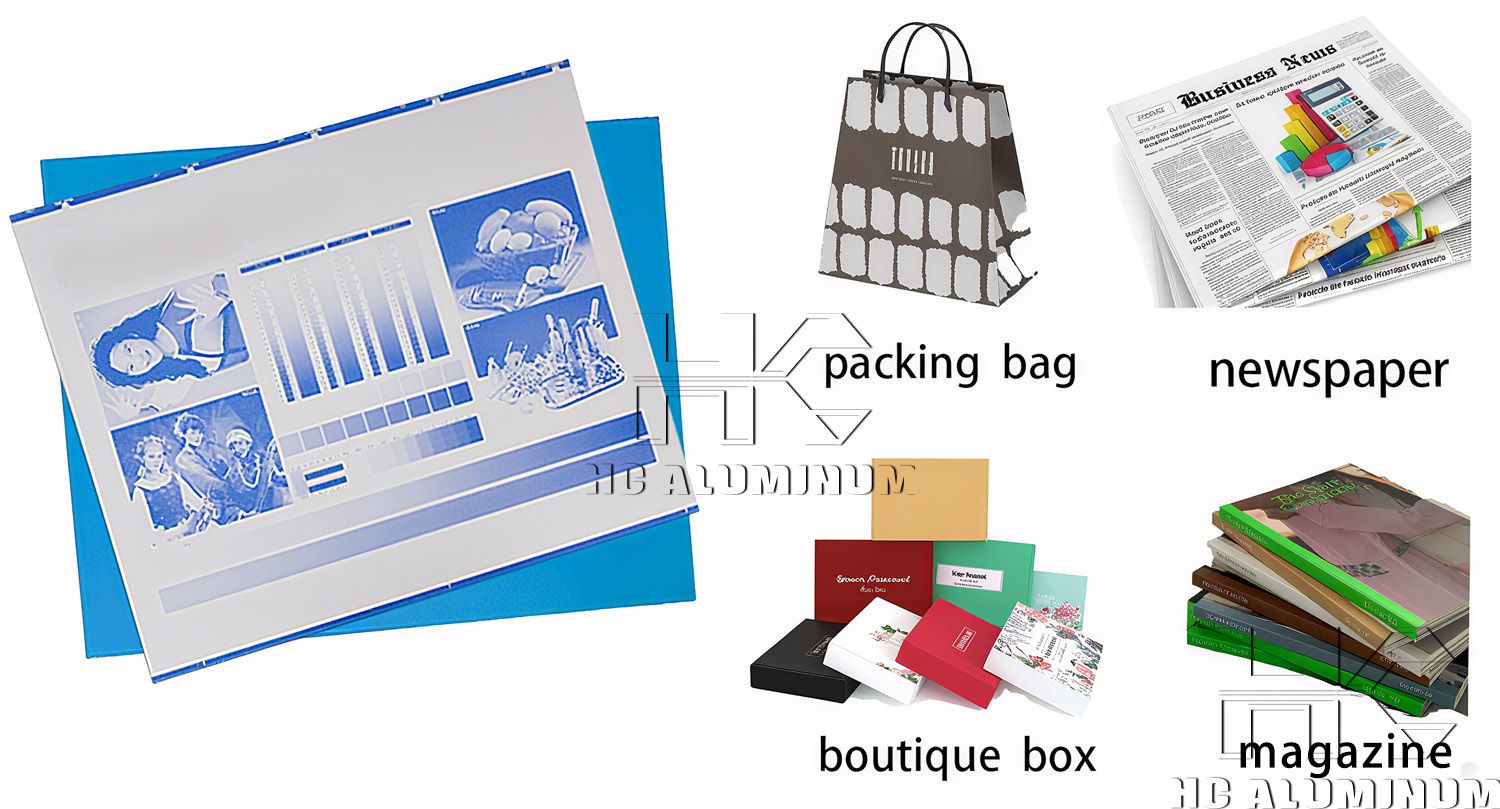If you have any questions, you can directly consult our online customer service. You can visit us online via WhatsApp. We look forward to your visit.
WhatsApp:8618703635966 Online
What Is Thermal CTP Plate in the Printing Industry?
What Is a Thermal CTP Plate?
In the printing industry, a thermal CTP plate (Thermal Computer-to-Plate) is a printing plate specially designed for Computer-to-Plate (CTP) technology. It uses lasers (typically infrared thermal lasers around 830 nm) to image directly onto an aluminum-based coated plate, without the need for the traditional film transfer process.
CTP technology shortens prepress preparation time, improves printing efficiency, enhances dot control, enables high-quality printing, reduces plate-making steps, saves time and labor, accelerates delivery, and lowers both time and labor costs.

Aluminum Base for CTP Plates
CTP plates are usually made using 1050, 1060, and 1070 aluminum alloys, which feature low density, relatively high strength, excellent formability, good hydrophilicity, high stability, and strong surface treatment properties.
Typical specifications for CTP aluminum base plates
| Alloy series | 1xxx series |
| Typical alloys | 1050A, 1050, 1060, 1070 |
| Temper | H18 |
| Thickness | 0.13-0.40 mm |
| Width | 650-1420 mm |
| Length | Customizable according to user requirements |
Where Are CTP Base Plates Used?
CTP aluminum base plates are widely used for:
Positive PS plates
Thermal CTP plates
Photosensitive CTP plates
UV-CTP plates
for offset printing applications.
Key Advantages of Thermal CTP Plates
1. Daylight-safe operation: One of the biggest advantages. The thermal coating is only sensitive to a specific range of infrared laser light, not visible light. This means plates can be handled under yellow safety lamps without requiring a darkroom, unlike photosensitive plates-greatly simplifying workflows.
2. Accurate dot reproduction: Thermal reaction is binary (reacts once it reaches the threshold temperature, otherwise no reaction). This results in sharp, clean dots with edge clarity, achieving 1%-99% high-precision dot reproduction. Print outputs are rich in detail and tonal range.
3. High resolution: Supports extremely high output resolution (200 lpi, 300 lpi, or higher), meeting the demands of premium-quality printing.
4. Excellent run length: Without baking, thermal CTP plates typically achieve 100,000-200,000 impressions; when baked, they can exceed 1,000,000 impressions, making them ideal for long-run jobs.
5. Stable performance: As thermal imaging is not affected by ambient light, plate quality remains stable and reliable throughout production and storage.
6. Environmentally friendly: Eliminates the need for film output, developing, and fixing steps, reducing chemical waste and silver salt pollution.
Applications of CTP Printing Plates
High-quality commercial printing: corporate brochures, premium posters.
Packaging printing: color boxes, labels-requiring precise detail and color fidelity.
Newspaper printing: fast imaging and high efficiency meet the demand for large-volume, short-turnaround publishing.
Professional publications: magazines, art catalogs, photography books-projects requiring accurate image reproduction.

CTP Plate Sizes
Common CTP plate sizes include:
1030 × 800 mm; 1030 × 795 mm; 1030 × 790 mm; 1030 × 770 mm; 920 × 760 mm; 910 × 665 mm; 790 × 595 mm; 790 × 565 mm; 766 × 605 mm; 745 × 605 mm.
For example, the well-known Kodak CTP machine supports the following maximum plate sizes:
Half-sheet model: 1030 × 838 mm (drum circumference × drum axis)
Full-sheet model: 1325 × 1650 mm
Large-format model: 1422 × 1804 mm
Extra-large format model: 1600 × 2083 mm
In addition to these, CTP plates can be customized to client specifications.
Comparison: Thermal CTP Plate vs. Traditional PS Plate
| Feature | Thermal CTP Plate | PS Plate (Photosensitive) |
Plate-making | Direct digital imaging (laser exposure) | Film transfer through exposure |
Environmental needs | Daylight-safe, no darkroom needed | Requires darkroom to avoid light |
Imaging precision | High resolution (2400 dpi+) | Moderate, dependent on film quality |
Workflow | Simple, fast, digital-to-plate | Complex, film and exposure required |
Stability | Stable dots, consistent print quality | Susceptible to film and operator error |
Eco-friendliness | Process-free or low-chemistry options | Relies on developer and fixer chemicals |
Applications | High-end commercial, packaging, publishing | Mid-to-low-end and traditional jobs |
Packaging of CTP Printing Plates
CTP plates are typically packaged with both inner and outer layers:
The outer layer is a corrugated carton secured with packing straps.
The inner layer is moisture-proof black wrapping paper.
Plates are separated by interleaving sheets to avoid scratches.
Website: https://www.printarea-plate.com/a/what-is-thermal-ctp-plate-in-the-printing-industry.html
Keyword: thermal CTP plate CTP plate CTP printing plate CTP plate price CTP plate size CTP offset plate CTP aluminum base plate 1050 aluminum sheet 1060 aluminum sheet 1070 aluminum sheet Computer-to-Plate (CTP) PS plate printing plate manufacturer CT

